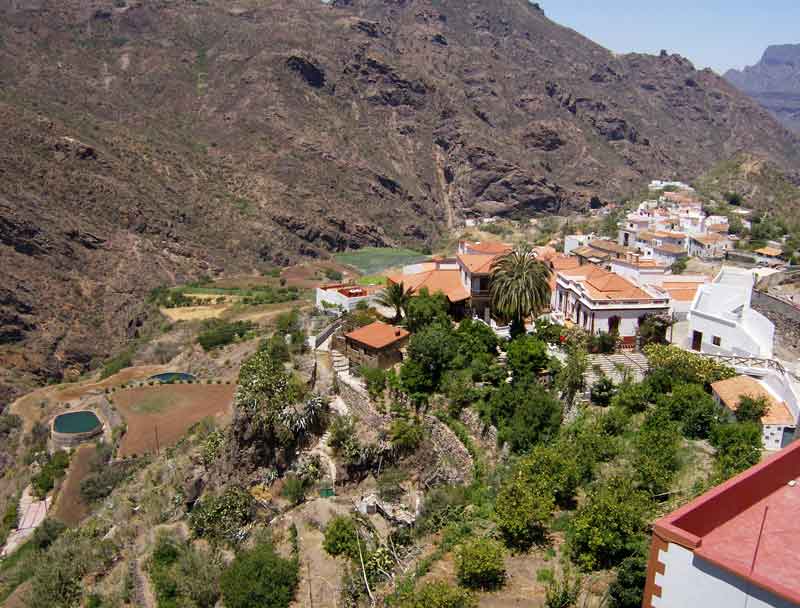 tejeda
tejeda
The winding and spectacular road of the GC-201 leads from Artenara to Tejeda, another picturesque mountain village, where you can walk the streets with small white houses and the pretty church of Nuestra Seńora de Socorro with 1921 r. There is an interesting Museo de Tradiciones and a museum-gallery dedicated to the local sculptor Abraham Cardenes.. Those interested in botany can visit the Centro de Interpretación de Plantas Medicinales, where medicinal plants are grown.
There is a tourist information office in the sculpture museum building: there you can get maps of local hiking trails. It is best to stay overnight at the modest Hostal Tejeda or at the pretty Hotel Ru rai Fonda de la Tea.
A bus goes to the town twice a day #305 z Las Palmas de Gran Canaria.
Tejeda Cross
After overcoming a dozen or so sharp turns, you reach the top of the hill (1450 m n.p.m.), on which, among the Canarian pines, stands a historic stone cross (cruz) – it is from him that this charming place takes its name. Roque Nubio and Roque Betaiga are beautifully seen from the hill: probably that is why the elegant Parador National de Turismo in Canarian style was built here. The charming El Refugio and several restaurants are just across the street, where you can try good local dishes.
roque nublo
Roque Nublo is the tracker 67 m basalt monolith growing from the skat in height 1813 m n.p.m., one of the most recognizable symbols of Gran Canaria. It is surrounded by smaller scales – due to the characteristic shapes they are called La Rana ("frog”) oraz The Friar ("monk”). All three are best viewed from the Degollada Becerra viewpoint a few kilometers south of Cruz deTejeda, on the GC-150 route (below the viewpoint there is a small Centro de Interpretación with a glass gallery). Roque Betaig is also visible from there – monolith growing almost perfectly in the center of Gran Canaria. Roque Betaiga was the holy place of the Guanches, who sacrificed on the altar preserved to this day, asking for rain.
It will be an unforgettable experience to hike under the Roque Nubio. The hike is only half a kilometer long and not really a difficult trail – you can meet both families with children, as well as the elderly. Start, at which a small parking lot was created, is located on the GC-600 route, kilometer west of the village of Ayacata.
Vega de San Mateo
A small town on a vast plateau boasts a pleasant square and a pretty Iglesia de San Mateo, which – although it was built at the beginning of the 20th century. – it is kept in a typical Canarian colonial style. In addition, there are several historic tenement houses on a small square. The Mercado de Agricultor market takes place every weekend in the town – on Saturdays, for a little money, you can buy specialties made on the island, and handicrafts on Sundays.
A bus goes to the town #303 z Las Palmas de Gran Canaria.
There is a tour desk on site.
Valsequillo
I do not 13 km from Vega de San Mateo is another charming town of Gran Canaria -Valsequillo. There is a nice church of St.. Michael the Archangel from the beginning of the 20th century., surrounded by traditional colorful townhouses. In the other streets there are small country houses. It is also worth taking a walk to the observation deck on calle del Sol, from which you can beautifully see the Barranco de San Miguel running below. The Cuartel de El Colmenar is also open to tourists – built in 1503 r. barracks.
You can get to Valsequillo by bus #13 z Telde i San Mateo, however, it runs very rarely. There is an excellent and affordable traditional Monzón restaurant on site. For the night you can rent the casas rurales La Pana or El Colmenar.